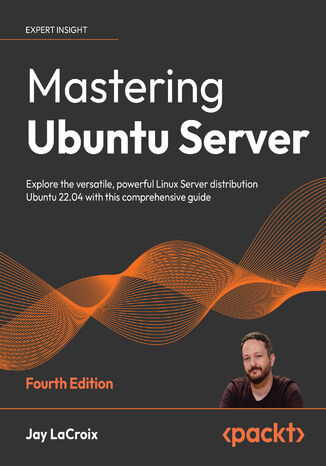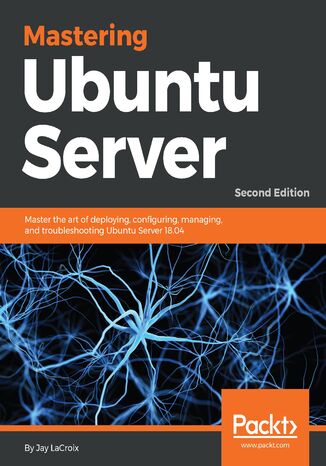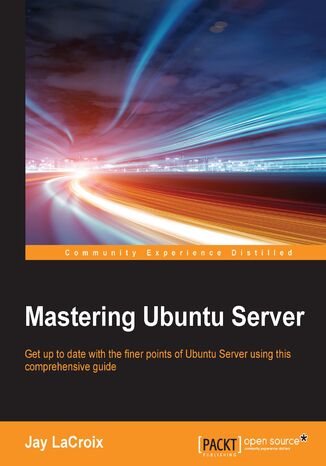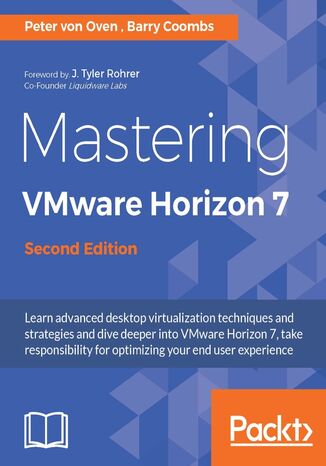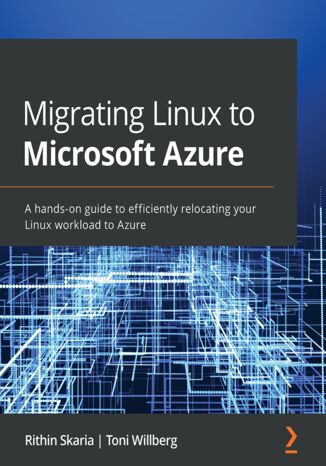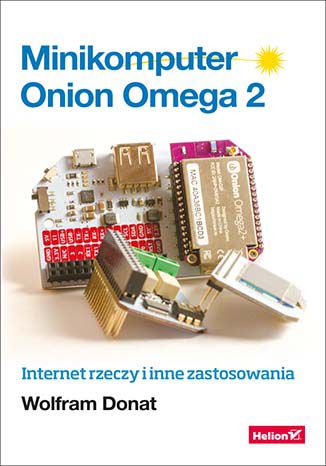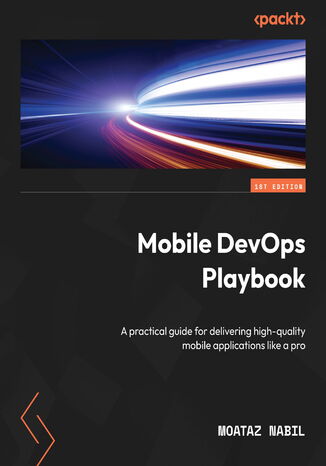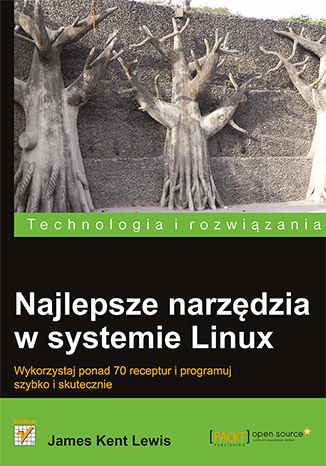Kategorie
Ebooki
-
Biznes i ekonomia
- Bitcoin
- Bizneswoman
- Coaching
- Controlling
- E-biznes
- Ekonomia
- Finanse
- Giełda i inwestycje
- Kompetencje osobiste
- Komputer w biurze
- Komunikacja i negocjacje
- Mała firma
- Marketing
- Motywacja
- Multimedialne szkolenia
- Nieruchomości
- Perswazja i NLP
- Podatki
- Polityka społeczna
- Poradniki
- Prezentacje
- Przywództwo
- Public Relation
- Raporty, analizy
- Sekret
- Social Media
- Sprzedaż
- Start-up
- Twoja kariera
- Zarządzanie
- Zarządzanie projektami
- Zasoby ludzkie (HR)
-
Dla dzieci
-
Dla młodzieży
-
Edukacja
-
Encyklopedie, słowniki
-
E-prasa
- Architektura i wnętrza
- BHP
- Biznes i Ekonomia
- Dom i ogród
- E-Biznes
- Ekonomia i finanse
- Ezoteryka
- Finanse
- Finanse osobiste
- Firma
- Fotografia
- Informatyka
- Kadry i płace
- Kobieca
- Komputery, Excel
- Księgowość
- Kultura i literatura
- Naukowe i akademickie
- Ochrona środowiska
- Opiniotwórcze
- Oświata
- Podatki
- Podróże
- Psychologia
- Religia
- Rolnictwo
- Rynek książki i prasy
- Transport i Spedycja
- Zdrowie i uroda
-
Historia
-
Informatyka
- Aplikacje biurowe
- Bazy danych
- Bioinformatyka
- Biznes IT
- CAD/CAM
- Digital Lifestyle
- DTP
- Elektronika
- Fotografia cyfrowa
- Grafika komputerowa
- Gry
- Hacking
- Hardware
- IT w ekonomii
- Pakiety naukowe
- Podręczniki szkolne
- Podstawy komputera
- Programowanie
- Programowanie mobilne
- Serwery internetowe
- Sieci komputerowe
- Start-up
- Systemy operacyjne
- Sztuczna inteligencja
- Technologia dla dzieci
- Webmasterstwo
-
Inne
-
Języki obce
-
Kultura i sztuka
-
Lektury szkolne
-
Literatura
- Antologie
- Ballada
- Biografie i autobiografie
- Dla dorosłych
- Dramat
- Dzienniki, pamiętniki, listy
- Epos, epopeja
- Esej
- Fantastyka i science-fiction
- Felietony
- Fikcja
- Humor, satyra
- Inne
- Klasyczna
- Kryminał
- Literatura faktu
- Literatura piękna
- Mity i legendy
- Nobliści
- Nowele
- Obyczajowa
- Okultyzm i magia
- Opowiadania
- Pamiętniki
- Podróże
- Poemat
- Poezja
- Polityka
- Popularnonaukowa
- Powieść
- Powieść historyczna
- Proza
- Przygodowa
- Publicystyka
- Reportaż
- Romans i literatura obyczajowa
- Sensacja
- Thriller, Horror
- Wywiady i wspomnienia
-
Nauki przyrodnicze
-
Nauki społeczne
-
Podręczniki szkolne
-
Popularnonaukowe i akademickie
- Archeologia
- Bibliotekoznawstwo
- Filmoznawstwo
- Filologia
- Filologia polska
- Filozofia
- Finanse i bankowość
- Geografia
- Gospodarka
- Handel. Gospodarka światowa
- Historia i archeologia
- Historia sztuki i architektury
- Kulturoznawstwo
- Lingwistyka
- Literaturoznawstwo
- Logistyka
- Matematyka
- Medycyna
- Nauki humanistyczne
- Pedagogika
- Pomoce naukowe
- Popularnonaukowa
- Pozostałe
- Psychologia
- Socjologia
- Teatrologia
- Teologia
- Teorie i nauki ekonomiczne
- Transport i spedycja
- Wychowanie fizyczne
- Zarządzanie i marketing
-
Poradniki
-
Poradniki do gier
-
Poradniki zawodowe i specjalistyczne
-
Prawo
- BHP
- Historia
- Kodeks drogowy. Prawo jazdy
- Nauki prawne
- Ochrona zdrowia
- Ogólne, kompendium wiedzy
- Podręczniki akademickie
- Pozostałe
- Prawo budowlane i lokalowe
- Prawo cywilne
- Prawo finansowe
- Prawo gospodarcze
- Prawo gospodarcze i handlowe
- Prawo karne
- Prawo karne. Przestępstwa karne. Kryminologia
- Prawo międzynarodowe
- Prawo międzynarodowe i zagraniczne
- Prawo ochrony zdrowia
- Prawo oświatowe
- Prawo podatkowe
- Prawo pracy i ubezpieczeń społecznych
- Prawo publiczne, konstytucyjne i administracyjne
- Prawo rodzinne i opiekuńcze
- Prawo rolne
- Prawo socjalne, prawo pracy
- Prawo Unii Europejskiej
- Przemysł
- Rolne i ochrona środowiska
- Słowniki i encyklopedie
- Zamówienia publiczne
- Zarządzanie
-
Przewodniki i podróże
- Afryka
- Albumy
- Ameryka Południowa
- Ameryka Środkowa i Północna
- Australia, Nowa Zelandia, Oceania
- Austria
- Azja
- Bałkany
- Bliski Wschód
- Bułgaria
- Chiny
- Chorwacja
- Czechy
- Dania
- Egipt
- Estonia
- Europa
- Francja
- Góry
- Grecja
- Hiszpania
- Holandia
- Islandia
- Litwa
- Łotwa
- Mapy, Plany miast, Atlasy
- Miniprzewodniki
- Niemcy
- Norwegia
- Podróże aktywne
- Polska
- Portugalia
- Pozostałe
- Przewodniki po hotelach i restauracjach
- Rosja
- Rumunia
- Słowacja
- Słowenia
- Szwajcaria
- Szwecja
- Świat
- Turcja
- Ukraina
- Węgry
- Wielka Brytania
- Włochy
-
Psychologia
- Filozofie życiowe
- Kompetencje psychospołeczne
- Komunikacja międzyludzka
- Mindfulness
- Ogólne
- Perswazja i NLP
- Psychologia akademicka
- Psychologia duszy i umysłu
- Psychologia pracy
- Relacje i związki
- Rodzicielstwo i psychologia dziecka
- Rozwiązywanie problemów
- Rozwój intelektualny
- Sekret
- Seksualność
- Uwodzenie
- Wygląd i wizerunek
- Życiowe filozofie
-
Religia
-
Sport, fitness, diety
-
Technika i mechanika
Audiobooki
-
Biznes i ekonomia
- Bitcoin
- Bizneswoman
- Coaching
- Controlling
- E-biznes
- Ekonomia
- Finanse
- Giełda i inwestycje
- Kompetencje osobiste
- Komunikacja i negocjacje
- Mała firma
- Marketing
- Motywacja
- Nieruchomości
- Perswazja i NLP
- Podatki
- Polityka społeczna
- Poradniki
- Prezentacje
- Przywództwo
- Public Relation
- Sekret
- Social Media
- Sprzedaż
- Start-up
- Twoja kariera
- Zarządzanie
- Zarządzanie projektami
- Zasoby ludzkie (HR)
-
Dla dzieci
-
Dla młodzieży
-
Edukacja
-
Encyklopedie, słowniki
-
E-prasa
-
Historia
-
Informatyka
-
Inne
-
Języki obce
-
Kultura i sztuka
-
Lektury szkolne
-
Literatura
- Antologie
- Ballada
- Biografie i autobiografie
- Dla dorosłych
- Dramat
- Dzienniki, pamiętniki, listy
- Epos, epopeja
- Esej
- Fantastyka i science-fiction
- Felietony
- Fikcja
- Humor, satyra
- Inne
- Klasyczna
- Kryminał
- Literatura faktu
- Literatura piękna
- Mity i legendy
- Nobliści
- Nowele
- Obyczajowa
- Okultyzm i magia
- Opowiadania
- Pamiętniki
- Podróże
- Poezja
- Polityka
- Popularnonaukowa
- Powieść
- Powieść historyczna
- Proza
- Przygodowa
- Publicystyka
- Reportaż
- Romans i literatura obyczajowa
- Sensacja
- Thriller, Horror
- Wywiady i wspomnienia
-
Nauki przyrodnicze
-
Nauki społeczne
-
Popularnonaukowe i akademickie
-
Poradniki
-
Poradniki zawodowe i specjalistyczne
-
Prawo
-
Przewodniki i podróże
-
Psychologia
- Filozofie życiowe
- Komunikacja międzyludzka
- Mindfulness
- Ogólne
- Perswazja i NLP
- Psychologia akademicka
- Psychologia duszy i umysłu
- Psychologia pracy
- Relacje i związki
- Rodzicielstwo i psychologia dziecka
- Rozwiązywanie problemów
- Rozwój intelektualny
- Sekret
- Seksualność
- Uwodzenie
- Wygląd i wizerunek
- Życiowe filozofie
-
Religia
-
Sport, fitness, diety
-
Technika i mechanika
Kursy video
-
Bazy danych
-
Big Data
-
Biznes, ekonomia i marketing
-
Cyberbezpieczeństwo
-
Data Science
-
DevOps
-
Dla dzieci
-
Elektronika
-
Grafika/Wideo/CAX
-
Gry
-
Microsoft Office
-
Narzędzia programistyczne
-
Programowanie
-
Rozwój osobisty
-
Sieci komputerowe
-
Systemy operacyjne
-
Testowanie oprogramowania
-
Urządzenia mobilne
-
UX/UI
-
Web development
-
Zarządzanie
Podcasty
- Ebooki
- Systemy operacyjne
- Linux
Linux
Ubuntu Server is taking the server world by storm - and for a good reason! The server-focused spin of Ubuntu is a stable, flexible, and powerful enterprise-class distribution of Linux with a focus on running servers both small and large.Mastering Ubuntu Server is a book that will teach you everything you need to know in order to manage real Ubuntu-based servers in actual production deployments. This book will take you from initial installation to deploying production-ready solutions to empower your small office network, or even a full data center. You'll see examples of running an Ubuntu Server in the cloud, be walked through set up popular applications (such as Nextcloud), host your own websites, and deploy network resources such as DHCP, DNS, and others. You’ll also see how to containerize applications via LXD to maximize efficiency and learn how to build Kubernetes clusters. This new fourth edition updates the popular book to cover Ubuntu 22.04 LTS, which takes advantage of the latest in Linux-based technologies.By the end of this Ubuntu book, you will have gained all the knowledge you need in order to work on real-life Ubuntu Server deployments and become an expert Ubuntu Server administrator who is well versed in its feature set.
Ubuntu Server has taken the data centers by storm. Whether you're deploying Ubuntu for a large-scale project or for a small office, it is a stable, customizable, and powerful Linux distribution that leads the way with innovative and cutting-edge features. For both simple and complex server deployments, Ubuntu's flexible nature can be easily adapted to meet to the needs of your organization. With this book as your guide, you will learn all about Ubuntu Server, from initial deployment to creating production-ready resources for your network. The book begins with the concept of user management, group management, and filesystem permissions. Continuing into managing storage volumes, you will learn how to format storage devices, utilize logical volume management, and monitor disk usage. Later, you will learn how to virtualize hosts and applications, which will cover setting up KVM/QEMU, as well as containerization with both Docker and LXD. As the book continues, you will learn how to automate configuration with Ansible, as well as take a look at writing scripts. Lastly, you will explore best practices and troubleshooting techniques when working with Ubuntu Server that are applicable to real-world scenarios. By the end of the book, you will be an expert Ubuntu Server administrator who is well-versed in its advanced concepts.
Mastering Ubuntu Server. Upgrade your Ubuntu skills
Ubuntu is a Debian-based Linux operating system, and has various versions targeted at servers, desktops, phones, tablets and televisions. The Ubuntu Server Edition, also called Ubuntu Server, offers support for several common configurations, and also simplifies common Linux server deployment processes.With this book as their guide, readers will be able to configure and deploy Ubuntu Servers using Ubuntu Server 16.04, with all the skills necessary to manage real servers. The book begins with the concept of user management, group management, as well as file-system permissions. To manage your storage on Ubuntu Server systems, you will learn how to add and format storage and view disk usage. Later, you will also learn how to configure network interfaces, manage IP addresses, deploy Network Manager in order to connect to networks, and manage network interfaces. Furthermore, you will understand how to start and stop services so that you can manage running processes on Linux servers. The book will then demonstrate how to access and share files to or from Ubuntu Servers. You will learn how to create and manage databases using MariaDB and share web content with Apache. To virtualize hosts and applications, you will be shown how to set up KVM/Qemu and Docker and manage virtual machines with virt-manager. Lastly, you will explore best practices and troubleshooting techniques when working with Ubuntu Servers.By the end of the book, you will be an expert Ubuntu Server user well-versed in its advanced concepts.
Mastering VMware Horizon 7. Virtualization that can transform your organization - Second Edition
Desktop virtualization can be a bit of a headache. But VMware Horizon 7 changes all that. With a rich and adaptive UX, improved security and a range of useful features for storage and networking optimization, there’s plenty to love.But to properly fall in love with it, you need to know how to use it. And that means venturing deeper into the software, taking advantage of its extensive range of features, many of which are underused and underpromoted. This guide will take you through everything you need to know to not only successfully virtualize your desktop infrastructure but also to maintain and optimize the infrastructure to keep all your users happy.We’ll show you how to assess and analyze your infrastructure, and how to use that analysis to design a solution that meets your organizational and user needs. Once you’ve done that, you’ll find out how to build your virtualized environment, before deploying your virtualized solution. But more than that, we’ll also make sure you know everything you need to know about the full range of features on offer, including mobile cloud, so you can use them to take full control of your virtualized infrastructure.
With cloud adoption at the core of digital transformation for organizations, there has been a significant demand for deploying and hosting enterprise business workloads in the cloud. Migrating Linux to Microsoft Azure offers a wealth of actionable insights into deploying Linux workload to Azure.You'll begin by learning about the history of IT, operating systems, Unix, Linux, and Windows before moving on to look at the cloud and what things were like before virtualization. This will help anyone new to Linux become familiar with the terms used throughout the book. You'll then explore popular Linux distributions, including RHEL 7, RHEL 8, SLES, Ubuntu Pro, CentOS 7, and more.As you progress, you'll cover the technical details of Linux workloads such as LAMP, Java, and SAP, and understand how to assess your current environment and prepare for your migration to Azure through cloud governance and operations planning. Finally, you'll go through the execution of a real-world migration project and learn how to analyze and debug some common problems that Linux on Azure users may encounter.By the end of this Linux book, you'll be proficient at performing an effective migration of Linux workloads to Azure for your organization.
Minikomputer Onion Omega 2. Internet rzeczy i inne zastosowania
Minikomputer Onion Omega 2 jest jedną z ciekawszych propozycji na rynku małych urządzeń jednopłytkowych (SBC). Został opracowany do zastosowań w internecie rzeczy. Działa pod kontrolą jednej z odmian Linuksa, systemu OpenWrt. Ma niewielkie rozmiary (43x26x10 mm), jego procesor MIPS pracuje z częstotliwością 580 MHz, może obsłużyć pamięć RAM do 256 MB i czytnik kart SD. Radzi sobie z kilkoma różnymi protokołami łączności, dzięki czemu bez trudu można go podłączyć do zwykłego komputera i komunikować się z nim za pomocą konsoli wyświetlanej w przeglądarce. Możliwości "cebuli" można łatwo rozszerzać za pomocą dostępnych płytek i modułów. To świetna propozycja dla każdego amatora elektroniki i robotyki! Ta książka jest wyjątkowo zwięzłym, a przy tym przystępnie napisanym i praktycznym podręcznikiem, dzięki któremu błyskawicznie uzyskasz wiedzę potrzebną do uruchomienia minikomputera Onion Omega 2 i rozpoczęcia pracy. Aby wykonać opisane tu projekty, potrzebujesz minikomputera Omega 2, modułu zasilającego, rozszerzenia przekaźnikowego i rozszerzenia z ekranem OLED. Przyda się też podstawowa znajomość Linuksa i Pythona. Dzięki książce w krótkim czasie poszerzysz horyzonty, zdobędziesz kilka nowych umiejętności, nauczysz się pracy z komponentami sprzętowymi - i będziesz gotów, by w pełni samodzielnie przygotować i wykonać kolejne projekty z zastosowaniem tego świetnego minikomputera. Najważniejsze zagadnienia: montaż i konfiguracja minikomputera konsola Onion Omegi zastosowanie Pythona własne projekty: "Tweetująca cebula" i "Światłolub" Onion Omega 2: pasjonująca droga do internetu rzeczy!
Mobile DevOps Playbook. A practical guide for delivering high-quality mobile applications like a pro
To build mobile apps, you need to understand mobile-first features, tools, and processes that help you build, test, and release robust apps faster and more efficiently. The multitude of challenges stemming from mobile development's inherent complexities, including native iOS and Android app creation, cross-platform frameworks, and the implementation of scalable architectures within extensive teams, collectively contribute to a substantial number of obstacles that can significantly prolong the release process.This book will help you understand and implement the best practices of mobile DevOps for continuous integration, testing, delivery, deployment, and monitoring. You’ll explore different challenges faced by developers due to varied OSs, the unforgiving nature of mobile applications, and continuous updates to mobile phones and learn how to maneuver through these challenges. You’ll also get to grips with the latest trends while discovering the potential future of mobile DevOps, with valuable insights and guidance about integrating mobile development teams into your organization.By the end of this book, you’ll be well-equipped to successfully implement mobile DevOps and build fast, qualitative, and efficient mobile apps for your team or organization.
Najlepsze narzędzia w systemie Linux. Wykorzystaj ponad 70 receptur i programuj szybko i skutecznie
Poznaj świat systemu Linux! Linux to darmowy system operacyjny, ceniony przez wielu użytkowników na całym świecie. Jego niezawodność, wydajność i możliwości sprawiły, że jest on podstawowym systemem dla największych serwerów na świecie. Użytkownicy domowi mają za to dostęp do atrakcyjnego wizualnie oraz przyjaznego interfejsu graficznego. W świecie Linuksa każdy znajdzie coś dla siebie. Niezależnie od sposobu, w jaki wykorzystujesz ten system, powinieneś poznać możliwości jego konsoli, czyli trybu tekstowego. Może to być zaskakujące, ale właśnie dzięki wpisywanym poleceniom jesteś w stanie najszybciej zrealizować wiele zadań. Oddajemy w Twoje ręce kolejną książkę z cenionej serii „Receptury”. Książki te charakteryzują się doskonałym przedstawieniem typowych problemów i najlepszych metod ich rozwiązywania. W trakcie lektury tej książki dowiesz się, jak sprawnie korzystać z linii poleceń oraz jakie środowisko graficzne wybrać. Ponadto zaczniesz bez problemu poruszać się po systemie plików, wyszukiwać potrzebne dane oraz je kompresować. W kolejnych rozdziałach nauczysz się pobierać strony bez przeglądarki, tworzyć własny serwer WWW oraz kopiować pliki pomiędzy różnymi komputerami. Jeżeli interesuje Cię bezpieczeństwo systemu, tworzenie skryptów, zarządzanie procesami lub budowa własnego jądra systemu — znajdziesz tu liczne przykłady i wartościowe porady. Książka ta jest wspaniałą lekturą dla wszystkich pasjonatów i użytkowników systemu Linux! Dzięki tej książce: poznasz linię poleceń systemu Linux skonfigurujesz i uruchomisz własny serwer WWW poznasz dostępne środowiska graficzne zobaczysz, jak zbudować własne jądro zaczniesz biegle posługiwać się systemem Linux Opanuj najlepsze techniki pracy z systemem Linux!

